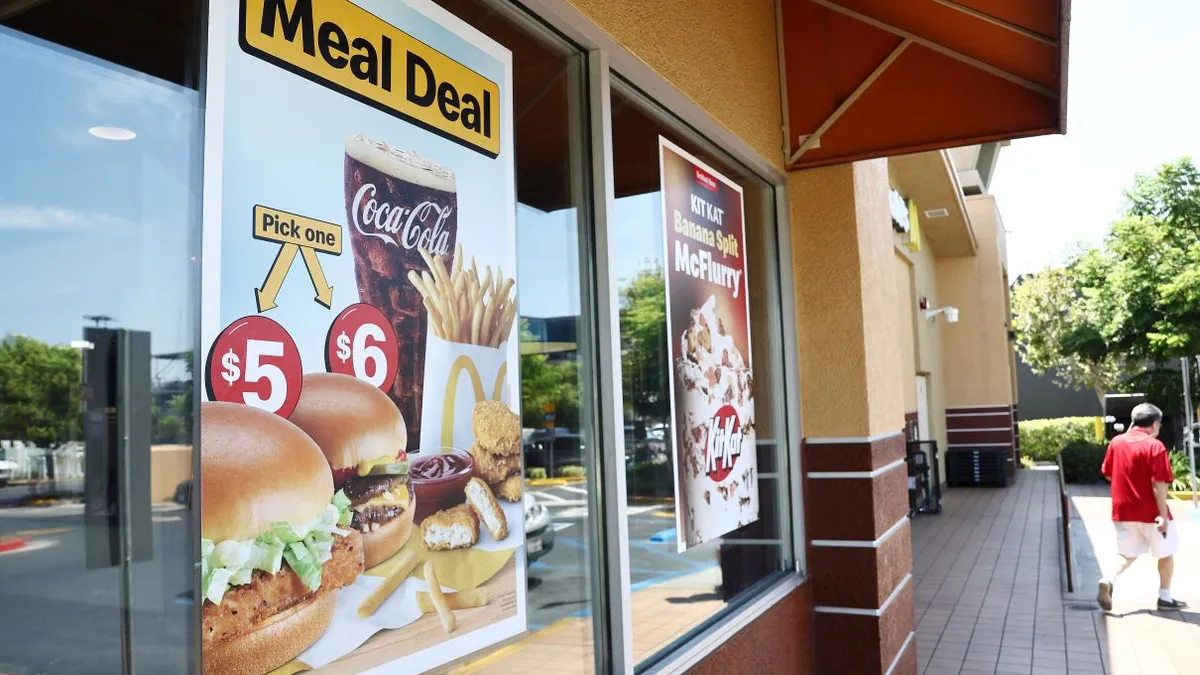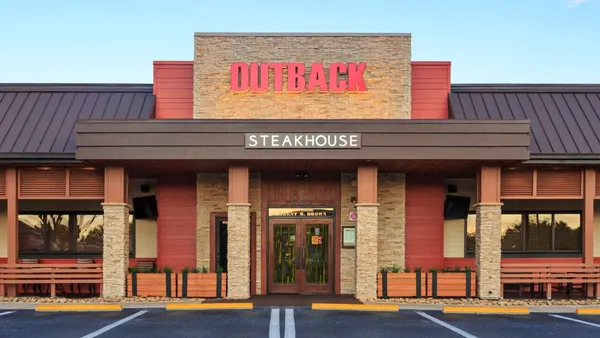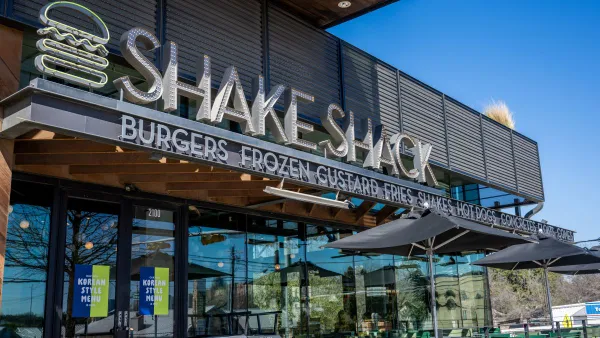Dive Brief:
- McDonald’s posted a 1% decline in global comparable sales for Q2 2024 compared to an 11.7% increase in the year-ago quarter, the company said in a Monday press release. U.S. comps were down 0.7% compared to an increase of 10.3% in the prior year’s period.
- The U.S. comps were impacted by declines in comparable guest counts that were partially offset by average check growth from “strategic menu price increases,” the company said.
- Comps could improve during the third quarter thanks to the chain’s $5 Meal Deal, which was released on June 25. That promotion, which many franchisees have agreed to extend into September, had an immediate positive impact on traffic.
Dive Insight:
McDonald’s negative U.S. comparable sales marks the first time the chain’s same-store sales have been in the red since Q2 2020, when it posted a decline of 8.7%.
“Beginning last year we warned of a more discriminating consumer, particularly among lower income households,” McDonald’s CEO Chris Kempczinski said during the call. “As this year progressed, those pressures have deepened and broadened. The QSR sector has meaningfully slowed in the majority of our markets, and industry traffic has declined in major markets like the U.S., Australia, Canada and Germany.”
While the chain is still seen as a value leader by consumers, its “leadership gap has recently shrunk,” he said.
With significant inflationary cost pressures ranging from 20% to 40% depending on market, the chain and its franchisees underwent selective price increases that “disrupted long running value programs and led consumers to reconsider their buying habits,” Kempczinski said.
In markets like Germany, Spain and Poland, where the chain embraced a flexible value program the allowed them to make quick adjustments, McDonald’s saw improvements in market share. However, in markets like the U.S. with its $1, $2, $3 value program, “a more comprehensive rethink has been required,” he said.
McDonald's U.S comparable sales
In the U.S., its $5 Meal Deal has performed above expectations, McDonald’s U.S. President Joe Erlinger said during the call.
“Trial rates in the deal are highest among lower income consumers and sentiment towards the brand around value and affordability has begun to shift,” Erlinger said, adding that 93% of the chain’s U.S. system has agreed to extend the platform even further into summer.
In particular, consumers with annual incomes under $45,000 and between $45,000 to $75,000 increasingly bought the deal. While guest count growth from the deal hasn’t yet translated into comparable sales growth, the chain is seeing average checks of over $10 with the $5 Meal Deal, which bodes well for a long-term value platform, Erlinger said.
Additionally, the chain is offering various mobile app deals, including nationwide Free Fry Fridays where guests can get a free medium fry every Friday with a $1 purchase on the app, he said. Mobile also continues to be a growing area of sales for the chain. Over the past three years, the chain’s loyalty program has grown to make up 20% of U.S. systemwide sales and has 37 million 90-day active users.
“We expect customers will continue to feel the pinch of the economy and a higher cost of living for at least the next several quarters in this very competitive landscape,” Erlinger said.
Kempczinski said the company is a growth business and isn't going to accept negative comparable sales.
"We absolutely are committed to getting this business back to growth," he said. "The foundation of that is the value platform that we've talked about. But we need to do more on menu innovation. We've got more levers that we can do on digital and certainly getting our marketing to be more of a contributor, as it was last year. I think all of hose things need to work in combination to get the business back to where we know its rightful place is."















